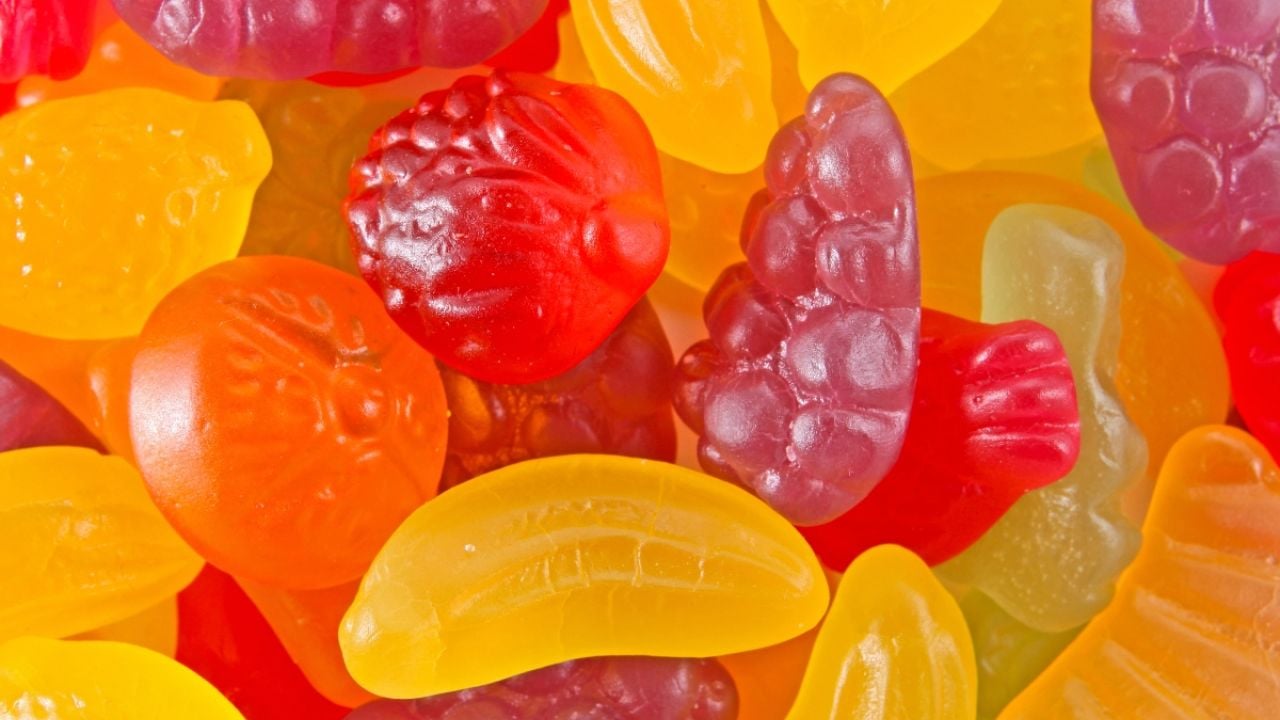
After the summer, it can seem daunting to return to the rhythm of packing school lunches with healthy snacks. Packaged fruit snacks are an easy addition to a child’s lunch bag or pocket for a quick burst of energy during the school day.
These snacks are appealing for parents and kids alike because they’re simple and tasty. But the very things that make them so attractive – bright colors, long shelf life and durable packaging – may also be the source of potentially harmful chemicals.
Food chemicals in fruit snacks
Synthetic food dyes
The rainbow of colors in fruit snacks comes from artificial food dyes of concern, including Blue No. 1, Red No. 40, Yellow No. 5 and Yellow No. 6.
These colorants are added to popular lunchtime treats like Sunkist Fruit Snacks, Welch’s mixed fruit snacks, Fruit by the Foot, Gushers, and Funables.
Red Dye No. 3 is particularly alarming because studies have shown that very high doses can cause cancer. It’s found not only in fruit snacks but also in fruit cups like Dole Cherry Mixed Fruit cups and Schnucks Mixed Fruit in Light Syrup cups.
The Food and Drug Administration banned the use of Red No. 3 in cosmetics in 1990 after concluding it causes cancer in rats. But the agency still allows its use in food.
Although food dyes are usually found in small quantities compared to other ingredients, they can harm children. Synthetic food dyes can make children vulnerable to behavioral difficulties, including decreased attention spans, according to a 2021 study by the California Office of Environmental Health Hazard Assessment.
Some children are more sensitive than others to artificial food dyes. Human studies have linked them to inattentiveness, learning difficulties and restlessness in sensitive children. Scientists found that just one milligram of Yellow No. 5 can harm the most sensitive kids, with many colorful foods marketed to children containing 10 to 20 milligrams of a combination of dyes in one serving.
Titanium dioxide
Convenient snacks for school may also contain titanium dioxide. This chemical is used as a color enhancer rather than a synthetic dye. It creates a smooth finish and adds brightness and shine to other colors used in foods.
Raisin snacks like Arizona Snack Company Yogurt Raisins and Sunrise Natural Foods Yogurt Raisins contain titanium dioxide.
The European Food Safety Authority no longer considers this chemical to be safe for human consumption. In 2021, it found that the build-up of titanium dioxide nanoparticles in the body can damage DNA. The European Union has since banned it from use in food sold within its borders.
Several public health advocacy organizations, including EWG, have petitioned the FDA to retract its approval for titanium dioxide in food. The other groups are the Environmental Defense Fund, Center for Science in the Public Interest, Center for Food Safety and Center for Environmental Health.
States step up
Federal action to remove harmful chemicals from our food remains limited, so states are filling the gap by proposing new legislation to ban their use.
A bill to ban the manufacture, sale and distribution of foods containing titanium dioxide and Red No. 3, as well as potassium bromate, brominated vegetable oil and propyl paraben, is making its way through the California legislature.
California Assemblymember Jesse Gabriel (D-San Fernando Valley) authored the bill, A.B. 418, which has passed the Assembly and recently cleared two Senate committees. If it’s enacted, California will be the first state to remove these five toxic chemicals from children’s food.
The New York legislature is considering a similar bill banning the same five food chemicals, which is making its way through committee.
What you can do
Until FDA regulatory action ensures safer chemicals in our foods, you can avoid packing your child’s lunch with snacks containing titanium dioxide and synthetic food dyes by:
- Reading the label. Synthetic dyes and titanium dioxide must be listed on ingredient labels. Sometimes they are hidden with terms such as “artificial color” or “color added.”
- Finding alternatives. Use EWG’s Food Scores database to look for similar snacks without these harmful chemicals. It rates more than 80,000 food products based on ingredient, nutrition and processing concerns.
- Choosing organic. Certified organic packaged foods meet strong USDA standards that protect consumers from exposure to potentially harmful food additives. Titanium dioxide and Red No. 3 are not allowed in organic foods.



